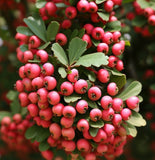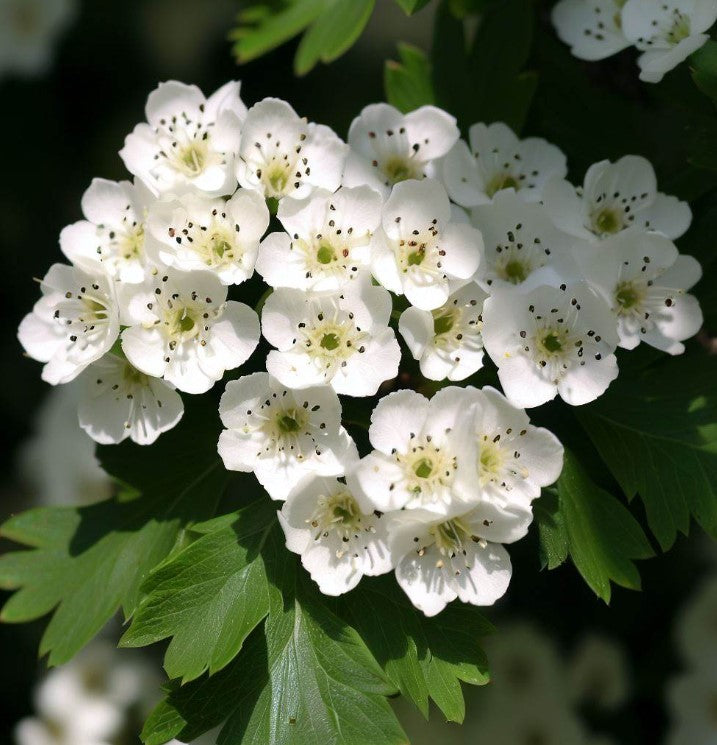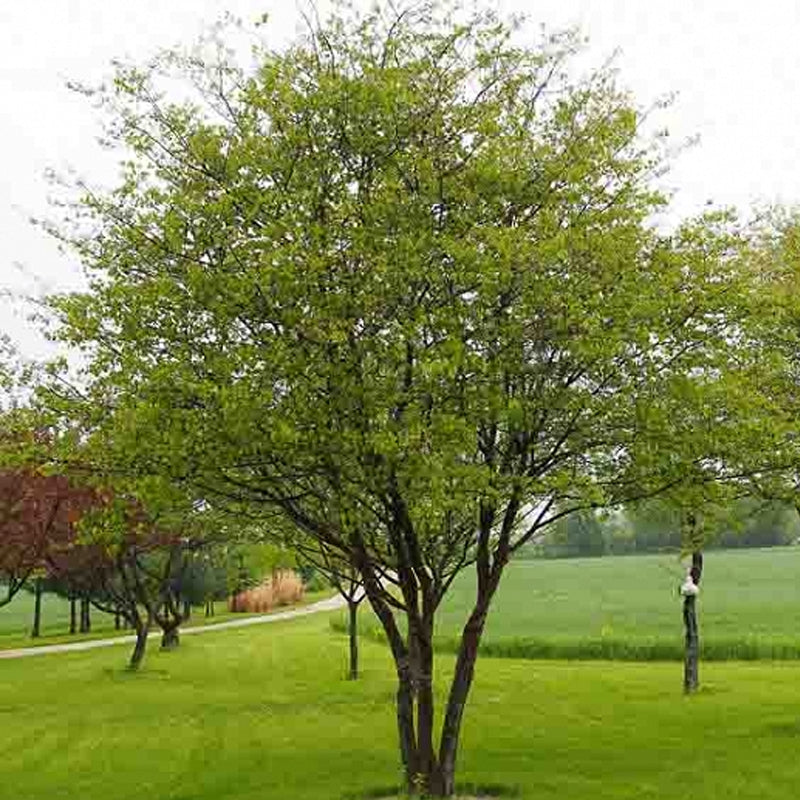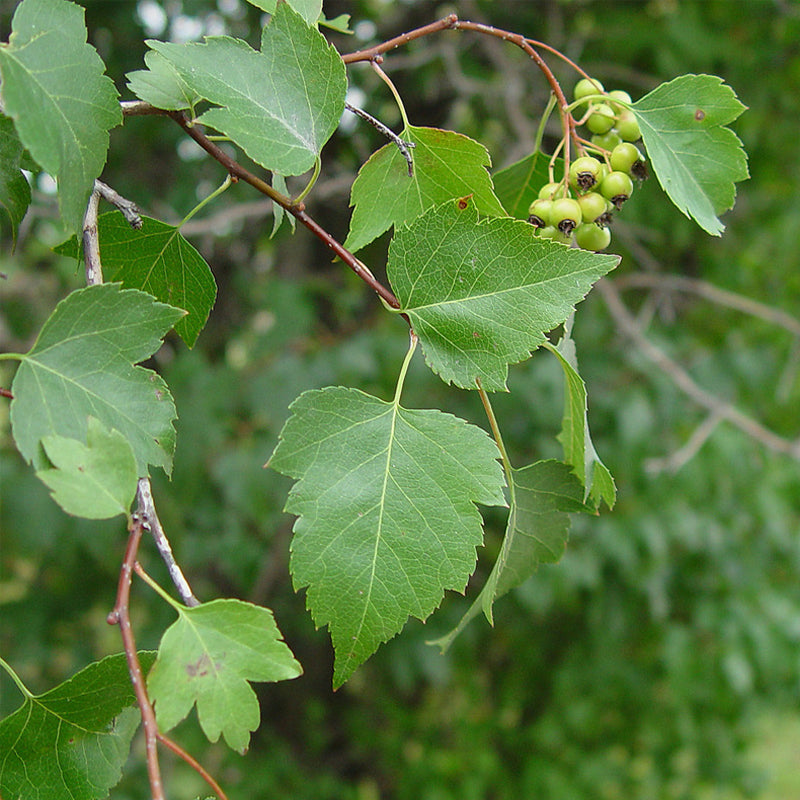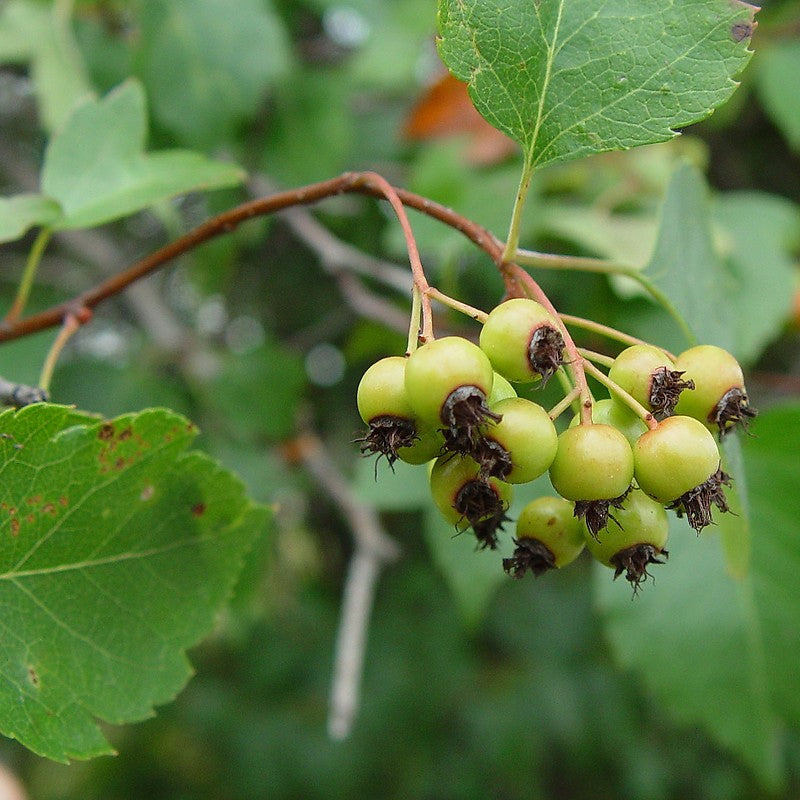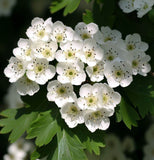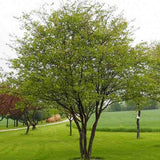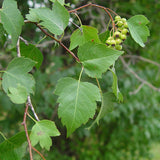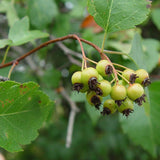Crataegus cordata (phaenopyrum) (Washington Hawthorn, Bigfruit Hawthorn, Broad-leaved Thorn, Mountain Hawthorn, Thornapple)
Crataegus cordata (phaenopyrum) (Bigfruit Hawthorn, Broad-leaved Thorn, Mountain Hawthorn, Thornapple, Washington Hawthorn) is a deciduous tree or large shrub belonging to the Rosaceae family. Washington Hawthorn typically grows to a height of 6-9 meters (20-30 feet) and has a rounded crown with dense branches. The branches often have thorns, which can vary in size and density depending on the variety. The leaves are alternate, simple, and have toothed or lobed margins. They are typically dark green and turn shades of yellow, orange, or red in the fall.
Flowers: In late spring to early summer, Washington Hawthorn produces clusters of white flowers. The flowers have five petals and are often fragrant. They attract pollinators such as bees and butterflies and provide a beautiful display.
Fruits: Following the flowers, Washington Hawthorn produces small, round fruits called haws. The haws are typically red or orange and persist on the tree into winter. They provide a food source for birds and other wildlife. While not commonly consumed by humans due to their tart taste, the haws can be used to make jellies or jams.
Landscape Use: Washington Hawthorn is valued for its ornamental qualities and is often used in landscaping. It can be planted as a specimen tree, in hedges, or in mixed borders. The attractive flowers, colorful fruits, and fall foliage make it visually appealing in landscapes.
Growing Conditions: Washington Hawthorn thrives in full sun to partial shade and prefers well-drained soil. It can tolerate a range of soil types, including sandy, loamy, or clay soils. It is relatively adaptable and can tolerate both dry and moist conditions. Once established, it is generally low-maintenance and requires minimal pruning.
Wildlife Value: The fruits of Washington Hawthorn are highly attractive to birds, providing a valuable food source during the winter months. The dense branching structure also offers cover and nesting sites for birds, making it beneficial for wildlife habitat.
Washington Hawthorn, Crataegus cordata, is a beautiful tree or shrub that adds beauty and ecological value to natural areas and gardens. With its attractive flowers, colorful fruits, and wildlife value, it is a popular choice for those seeking an ornamental tree that also supports local ecosystems.
Botanical Name : Crataegus cordata (phaenopyrum)
Common Name : Bigfruit Hawthorn, Broad-leaved Thorn, Mountain Hawthorn, Thornapple, Washington Hawthorn
Height : 25-30 ft
Spread : 15-20 ft
Germination Info : 120 days cold moist stratification.
Hardiness zone : 4-8
Average seed per ounce : Approx. 1,750

